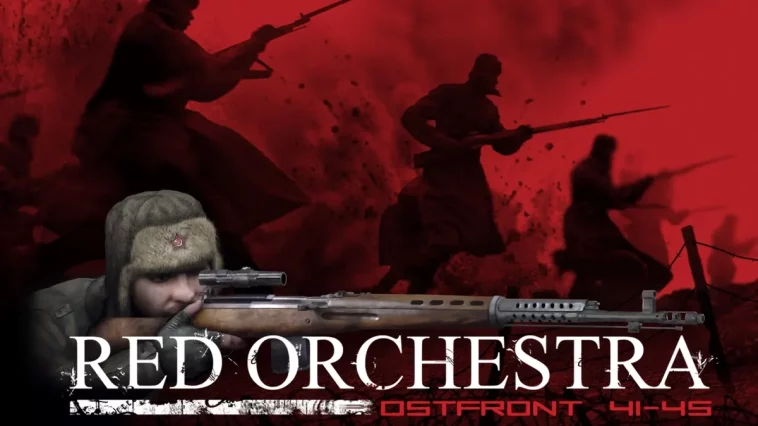Red Orchestra: Ostfront 41-45 is a tactical first-person shooter video game based on its predecessor Red Orchestra: Combined Arms. After winning the Make Something Unreal contest, the team behind the original Red Orchestra started the game studio Tripwire Interactive and developed Red Orchestra: Ostfront 41-45 as their first project.
Set on the Eastern Front during World War II between 1941 and 1945, Red Orchestra: Ostfront 41-45 depicts the struggle between Soviet and German forces. The game’s creators, Tripwire Interactive, developed the game out of the previous Unreal Tournament 2004 mod, Red Orchestra: Combined Arms.
The Eastern Front:
Set on the brutal Eastern Front of World War II, “Red Orchestra: Ostfront” pits players in the midst of the conflict between Nazi Germany and the Soviet Union. Unlike many WWII games that focus on the Western Front, this game sheds light on a lesser-known but equally significant theater of war.
Realism at Its Core:
One of the defining features of “Red Orchestra: Ostfront” is its unwavering commitment to realism. The game is known for its attention to detail in firearms, ballistics, and historical accuracy. It offers a challenging and unforgiving gameplay experience where tactics, teamwork, and marksmanship are paramount.
Authentic Weapons and Ballistics:

In “Red Orchestra: Ostfront,” players have access to a wide range of historically accurate firearms, each with its own characteristics and recoil patterns. The game’s ballistics system takes into account factors such as bullet drop and penetration, adding a layer of realism rarely seen in other FPS titles.
No Crosshairs, No Hand-Holding:
Unlike most modern shooters, “Red Orchestra: Ostfront” ditches the traditional crosshair and minimap. Players must rely on iron sights and teamwork to navigate the battlefield and identify enemy positions. This decision adds to the game’s immersion and forces players to think strategically.
Historical Maps and Environments:
The game’s maps are painstakingly recreated to resemble actual Eastern Front battlefields. Players can engage in intense firefights in urban settings, trenches, and open fields, all based on real-world locations. This commitment to historical accuracy extends to the game’s vehicles and equipment as well.
Teamwork and Communication:
“Red Orchestra: Ostfront” places a strong emphasis on teamwork and communication. Players must work together to achieve objectives and overcome the enemy. This focus on collaboration adds depth to the gameplay and encourages players to adopt authentic WWII tactics.
Impact and Legacy:
While “Red Orchestra: Ostfront” may not have achieved the same mainstream success as some other FPS titles, it carved a niche for itself in the gaming world. Its dedication to realism and historical accuracy influenced subsequent WWII-themed games, prompting a shift towards more authentic portrayals of the era.
Conclusion:
“Red Orchestra: Ostfront 41-45” is a testament to the power of realism in gaming. Its unrelenting commitment to historical accuracy and authenticity offers players a unique and challenging World War II experience.
While it may not be for everyone due to its steep learning curve, it remains a revered title among fans of realistic FPS games, showcasing the potential for immersive and historically grounded storytelling in the gaming world.



Comments